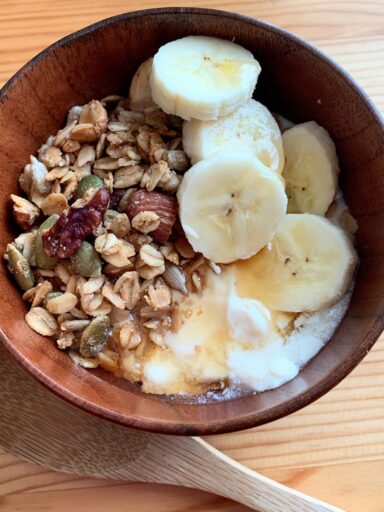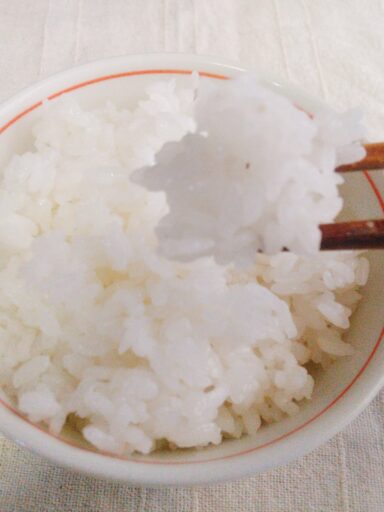Bibimbap is one of the most famous Korean food in Japan. It used to be my favourite dish when I went out for dinner at a Korean barbecue restaurant until I discover that I can make it at home. I usually use vegan soy meat to make my bibimbap, but vegan meat might be unavailable outside Japan, so I thought making vegan meat with tofu would be great, and the result was amazing! Bibimbap is often served in a hot stone bowl to keep it hot while eating and make the bottom of the rice crispy, but the bowl isn’t easy to come by outside Korea, so I came up with a way to replacate the stone bowl by using iron skillet. You can enjoy lots of vegetables and tofu protein with slightly crispy rice in a hot skillet!

What is bibimbap?
Bibimbap is a traditional Korean rice dish that usually consists of rice, vegetables, beef, and egg. It is commonly served with kimchi and gochujang and mixed with a spoon before eating. Bibim means “mixing” and bap means “rice”, so you need to mix the rice and vegetables thoroughly with gochujang. It has almost all tastes in the bowl, the spiciness from gochujang, sweetness from sugar, and salty umami from soy sauce. There are lots of different kinds of bibimbap in Korea, and how it is served varies. In Japan, serving it in a hot stone bowl is common at Korean restaurant, but serving in a metal bowl or an ordinary ceramic bowl is also common in Korea, especislly in home cooking.
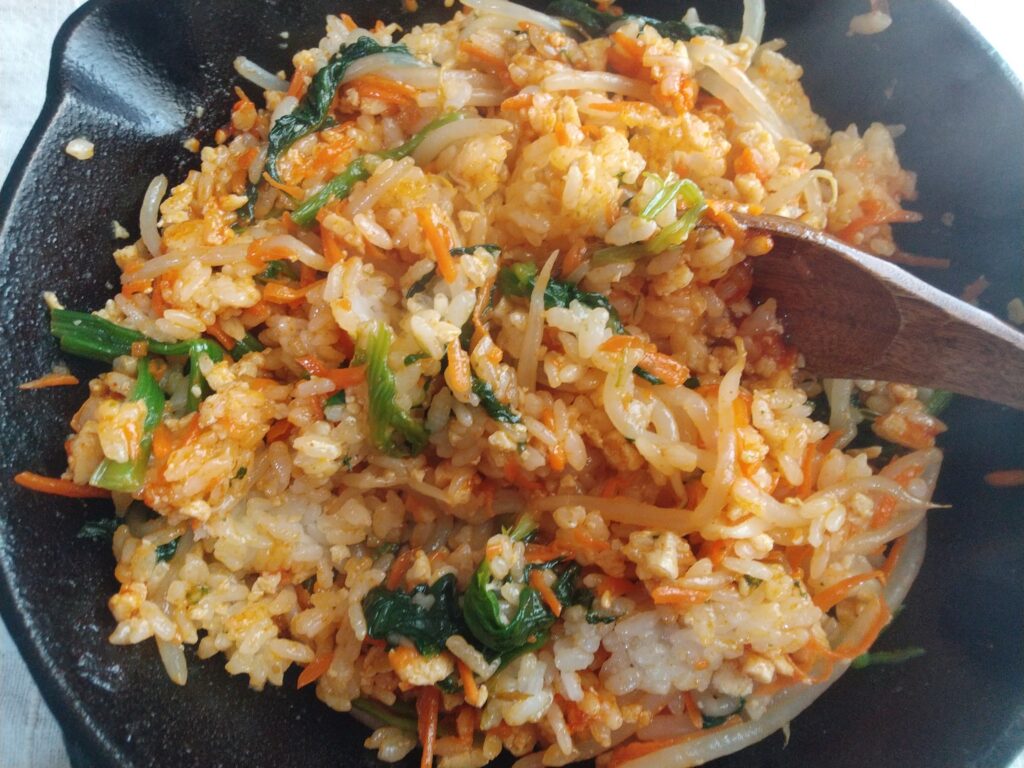
Ingredients you will need
Tofu – Extra firm tofu is the best for the recipe because you don’t need to press it to remove excess water out. If you use firm tofu or medium firm tofu, make sure to press it for at least 3 hours.
Soy sauce – You can use any type of soy sauce, but in my opinion, the darker the soy sauce, the more appetizing your tofu would look!
Sugar– I like to use beet sugar because it is vegan. Raw cane sugar and coconut sugar are also vegan.
Sake & Ginger – Sake and ginger are for deep flavour. You can omit them if you want.
Vegetables – The most common vegetables for bibimbap are bean sprouts, carrots, and spinach, but actually, you can use any vegetables you like. Lettuce and cabbage are also popular, especially in home cooking.
Gochujang – Gochujang is an essential ingredient in making bibimbap. If you don’t have one, there are some ways to make substitutions for it. I listed them below.
Sriracha sauce – It is used in vegan bibimbap as a replacement of “Kimchi” because kimchi is usually not vegan. Sriracha sauce has sourness and spiciness that kimchi also has. If vegan kimchi is avaliable in your area, by all means use it!
Sesame – It is for garnish, the nutty aroma of it adds deep flavour to your bibimbap. I recommend you use a toaste one or ground one which is more flavourful than the one that is just toasted.
Steamed rice – I always use Japanese short-grain rice which is used in Korea as well, but you can make your bibimbap with long-grain rice such as jasmine rice or basmati rice if you want.

Tips for making vegan Bibimbap
Cook your tofu meat enough
To make the texture of your tofu more meat-like, it is very important to get it to soak up soy sauce completely to prevent it soggy.
Discard the excess water from cooked vegetables
If your vegetables release some water while steaming, make sure to discard excess water so as not to make your bibimbap watery.
Season your vegetables generously
Steamed vegetables tend to become bland, so you need to season them with salt generously.
Sear your steamed rice to crisp up the bottom
The point of using an iron skillet for making bibimbap is to make a crispy bit at the bottom of your rice.
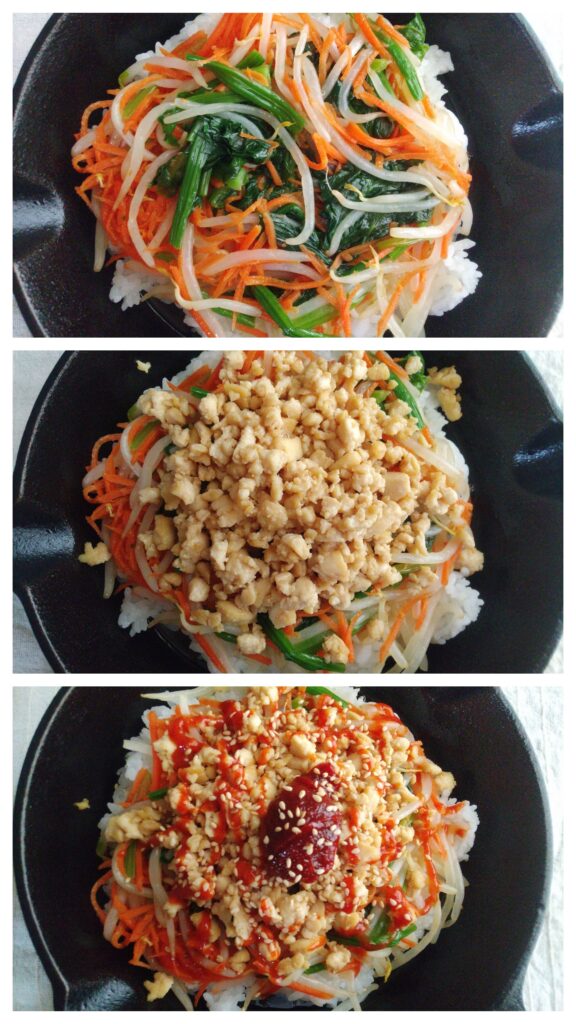
Q & A
Can I make the bibimbap without a skillet?
Yes, of course. You can make bibimbap without searing rice. You can use any bowl you like.
What to use for the vegan bibimbap if I don’t like tofu?
If vegan meat is available in your area, use the one, or tempeh and seitan (gluten meat) are great options.
How long can I store minced tofu in the fridge?
You can store it in the fridge for at least 1 week. Put it in an airtight container to prevent it from drying.
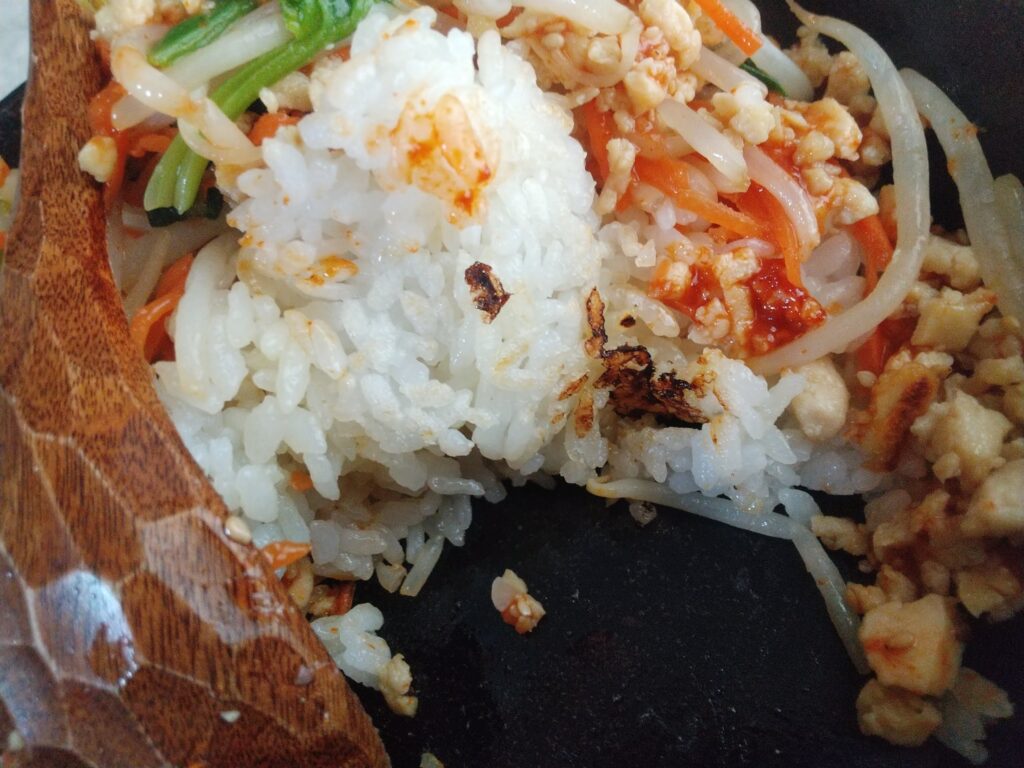
More Recipes to Enjoy
How to cook Japanese Rice in a dutch oven
How to Cook Japanese Rice In a Pot
Vegan Crispy Fried Tofu Rice Bowl with Korean Spicy Sauce (Yangnyeom)
Vegan Korean Potato Pancakes (Gamjajeon)
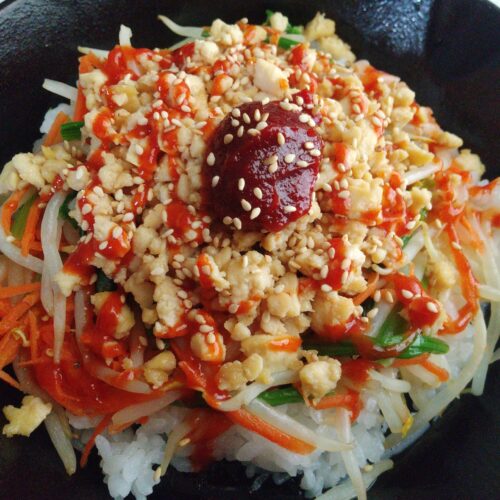
Skillet Bibimbap (Vegan)
Equipment
- Skillet (5-6 inches) Per person
- 1 Frying pan
Ingredients
For the Minced Tofu
- 300 g Firm Tofu If you use extra firm tofu, use 250g of tofu
- 2 tbsp Soy sauce
- 2 tbsp Sugar
- 1 tbsp Sake or white wine
- ¼ tsp Ginger powder optional
- some Oil for frying
For the Vegetables
- 60-80 g Carrot shredded or
- 100 g Bean Sprouts
- 100-130 g Spinach cut into about 3 cm
- ¼ tsp Salt
- ½ tsp Sesame Oil
- 150-200 g Steamed Rice
- some Oil
For the Garnish
- 1 tsp Gochujang per person
- some Sesame
- some Sriracha Sauce
Instructions
For the Minced Tofu
- To prepare the tofu, wrap it with a clean tea towel or a piece of kitchen towel and place it on a tray or a plate. Put something heavy such as a saucepan and weigh it down more with cans or jars. Leave it for about 1 hour to press the excess water out as much as possible.If you use extra firm tofu, you might not have to do it at all. It depends on the tofu you are using.
- Put a frying pan over medium-high heat and pour some oil. Add your pressed tofu and crumble it with a spatula or a wooden spoon until it resembles minced meat. Stir in soy sauce, sugar, and ginger powder (optional) to the tofu and continue cooking until all liquid has been absorbed and looks a bit dry.
For the Vegetables
- Method 1 (Frying pan)Put the same frying pan that you used for the tofu on the stove, and put all vegetables into the pan. Put a lid on and turn on the heat to medium. Cook them for about 5 mins or until the vegetables become wilted.
- Method 2 (Microwave)Put all vegetables into a large bowl and cover it with cling film or a microwavable lid. Microwave the bowl for about 2-3 mins depending on the microwave you use.
- Once your vegetables have cooked, soak excess water with a kitchen towel if needed. Sometimes a lot of water is released after steaming vegetables. Sprinkle salt and sesame oil on them and stir to taste.
To Assemble
- Heat a skillet per person on medium-high and add steamed rice. Put vegetables on top of the rice and minced tofu on top of the vegetables. Finally, put 1 tsp of gochujang on top of the tofu and sprinkle some sesame. Enjoy it!
Notes
- Other vegetable options are leek, onion, bell pepper, cabbage, and mushrooms.
- If you want your bibimbap less spicy, mix some sugar with gochujang, or use less spicy gochujang for your bibimbap.
- If your bibimbap tastes bland, feel free to pour some soy sauce.


